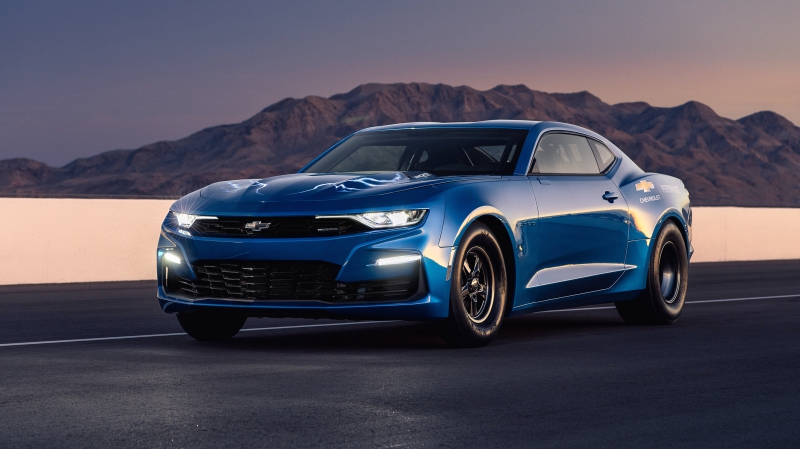The narrative that muscle cars are nothing but big and silly straight line machines is as pervasive as it is misleading. Muscle cars are big and silly straight line platforms for owners to tweak, or drop in bigger engines, to go quicker in a straight line, and Chevrolet showed up to this year’s SEMA motor show brandishing a rather shocking proposition for hot rodding fans, an electric Camaro drag car.
Christened as the eCOPO Camaro Concept, after Chevrolet’s purpose-built 1969 COPO Camaro NHRA drag car, the SEMA concept drag car had its V8 heart swapped out for an electric motor that is “based on a pair of BorgWarner HVH 250-150 motor assemblies”, each of which chucks out more than 400Nm of torque.

The interesting bit, however, is that unlike many electric cars which do away with the transmission, the eCOPO’s electric motor is paired up with a conventional “Turbo 400” automatic transmission. Chevrolet says the electric motor comes with the same bell house mounting pattern and crankshaft flange as an LS-family engine. As for the transmission itself, it is hooked up to the COPO’s standard solid rear axle and driveshaft.
The only other important element in this transition is the eCOPO’s four 200V battery modules, two of which takes the place of the rear seats and the other two are fitted in the boot area to achieve an optimal 56-percent rear-weight bias.
All put together, Chevrolet claims that the eCOPO is able to do the quarter-mile in the 9-second range, which is impressive considering a carbon-bodied 897kW twin-turbo Dodge Demon recently clocked in a record run of 8.77-seconds, though at the same time rather unsurprising considering that recent electric-propelled cars have been humbling petrol-fed supercars on the drag strip.

At this stage, Chevrolet says the components used in the eCOPO might become potential new crate engine and performance parts offerings in the future. Though the eCOPO might not be your average hot rodding fare of chopped-up classic cars with paint jobs as loud as its oversized chrome-plated V8 engines, the possibility of watching a raucous racer lose out to one with the muted hum of a golf cart might make some of the staunchest traditionalists reassess their octane-fueled inclinations.
Regardless of your preferences, evidence of the public’s gradual acceptance of electric cars are already present. Jaguar has recently started offering retrofitting services to convert classic E-Types with a plug-and-play all-electric drivetrain, while numerous independent outfits offering electric drivetrain conversions for everything from Volkswagen Beetles to classic Porsches, and not to mention the numerous online videos of electric cars leaving distraught petrol-fueled supercars in the dust.
Just as how the freedom to tweak and tinker has birthed whole movements and enthusiasts in car culture, many of which have been essential to the perception and prestige of their respective brands, electric drivetrain conversions have the potential to create a new generation of enthusiasts who are intrigued by what electrification has to offer. It would be a shame to dismiss such interesting new avenues just for the preservation of an era that is fast fading into the annals of history, and that wouldn’t be the right narrative to leave for future generations.

